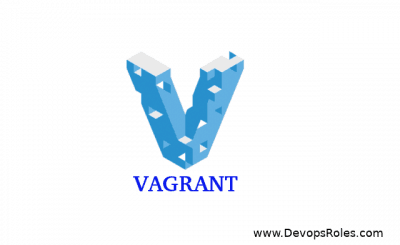Table of Contents
Introduction
In the fast-paced world of DevOps, efficiency and automation are critical. Vagrant is a powerful tool that simplifies creating, managing, and deploying virtualized environments. With Vagrant, developers can quickly spin up development environments that mirror production, improving consistency and reducing configuration time. Vagrant tutorial explores essential features, how it fits into DevOps workflows, and walks through setting up and using Vagrant in real-world scenarios.
What is Vagrant?
Vagrant is an open-source tool designed to create and configure lightweight, reproducible, and portable development environments. It automates the setup and configuration of virtual machines (VMs), making it easier to replicate environments across different machines. Vagrant is widely used in DevOps as it provides a streamlined approach for managing infrastructure as code (IaC), reducing inconsistencies between development, staging, and production environments.
Why Use Vagrant in DevOps?
- Consistency: Ensures all team members work in identical environments.
- Portability: Environments can be moved between machines seamlessly.
- Automation: Automates VM setup, configuration, and provisioning.
- Simplicity: Simplifies managing and destroying virtual environments with one command.
Prerequisites for Using Vagrant
Before we dive into using Vagrant, make sure you have the following installed:
- Vagrant: Download Vagrant.
- VirtualBox (or any provider supported by Vagrant): Download VirtualBox.
- Terminal or Command Prompt: For running Vagrant commands.
Getting Started with Vagrant Tutorial
Step 1: Install Vagrant and VirtualBox
To start, download and install Vagrant and VirtualBox, which Vagrant uses by default as the virtualization provider. After installation, verify that Vagrant is installed correctly by running:
vagrant --versionStep 2: Initialize a Vagrant Project
In a new directory, initialize a Vagrant project. This will create a Vagrantfile—a configuration file that defines the environment.
mkdir my-vagrant-project
cd my-vagrant-project
vagrant init
This creates a Vagrantfile in the project directory, which is essential for configuring your Vagrant environment.
Step 3: Edit the Vagrantfile
Open the Vagrantfile in your preferred text editor. Modify the following lines to specify the box (VM image) and networking options:
Vagrant.configure("2") do |config|
config.vm.box = "ubuntu/bionic64"
config.vm.network "private_network", type: "dhcp"
end
In this example, we are using the ubuntu/bionic64 box and setting up a private network. You can find other pre-built boxes at Vagrant Cloud.
Step 4: Start the Vagrant Environment
With the Vagrantfile configured, run the following command to start the Vagrant environment:
vagrant up
This command will download the specified box if it’s not already available locally and then create and configure the VM.
Step 5: SSH into the VM
To interact with your virtual machine, SSH into it with the command:
vagrant ssh
This opens a terminal session directly into the VM, where you can perform additional configurations or install software.
Step 6: Suspend, Halt, or Destroy the VM
When you’re done, you can suspend, halt, or destroy the VM to save resources.
- Suspend:
vagrant suspend- Saves the state of the VM to resume later.
- Halt:
vagrant halt- Shuts down the VM.
- Destroy:
vagrant destroy- Completely removes the VM.
Vagrant for DevOps: Advanced Use Cases
1. Provisioning with Shell Scripts
Vagrant supports provisioning using shell scripts, making it easy to install software and perform configurations during the VM setup.
Example Vagrantfile with shell provisioning:
Vagrant.configure("2") do |config|
config.vm.box = "ubuntu/bionic64"
config.vm.provision "shell", inline: <<-SHELL
sudo apt-get update
sudo apt-get install -y nginx
SHELL
end
This setup will automatically install Nginx when the VM is created.
2. Multi-Machine Environments
Vagrant allows you to define multiple VMs within a single Vagrantfile, useful for simulating complex environments like microservices architectures.
Example Vagrantfile for multi-machine setup:
Vagrant.configure("2") do |config|
config.vm.define "web" do |web|
web.vm.box = "ubuntu/bionic64"
web.vm.network "private_network", ip: "192.168.33.10"
web.vm.provision "shell", inline: "sudo apt-get install -y nginx"
end
config.vm.define "db" do |db|
db.vm.box = "ubuntu/bionic64"
db.vm.network "private_network", ip: "192.168.33.11"
db.vm.provision "shell", inline: "sudo apt-get install -y mysql-server"
end
end
In this setup, we have two VMs: a web server and a database server, each with a private IP address.
3. Using Ansible with Vagrant
Vagrant can integrate with Ansible for more complex provisioning, ideal for larger DevOps environments.
Example Vagrantfile with Ansible provisioning:
Vagrant.configure("2") do |config|
config.vm.box = "ubuntu/bionic64"
config.vm.provision "ansible" do |ansible|
ansible.playbook = "playbook.yml"
end
end
The playbook.yml file defines the configuration managed by Ansible, making it easy to apply configurations across multiple VMs.
Common Vagrant Commands Cheat Sheet
| Command | Description |
|---|---|
vagrant init | Initialize a new Vagrant project |
vagrant up | Start and provision the VM |
vagrant ssh | SSH into the VM |
vagrant suspend | Suspend the VM |
vagrant halt | Halt the VM |
vagrant destroy | Destroy the VM |
vagrant provision | Re-run provisioning scripts on the VM |
vagrant reload | Restart the VM and apply any configuration changes |
Frequently Asked Questions
What is Vagrant used for?
Vagrant is used to create, configure, and manage virtualized environments for development and testing, ensuring consistency across different stages of software development.
How does Vagrant work with DevOps?
Vagrant allows DevOps teams to automate environment setup, streamline testing, and ensure consistent configurations between development, staging, and production.
Can Vagrant work with Docker?
Yes, Vagrant supports Docker as a provider, allowing users to create and manage Docker containers instead of virtual machines.
What are the system requirements for Vagrant?
Vagrant requires a 64-bit operating system and compatible virtualization software (e.g., VirtualBox, VMware, Docker).
How is Vagrant different from Docker?
Vagrant primarily manages virtual machines, while Docker manages containers. Vagrant is ideal for managing full VM environments, while Docker is optimized for lightweight, isolated containers.

External Resources
- Vagrant Official Documentation
- Vagrant Cloud – Find and use pre-built Vagrant boxes.
- HashiCorp – The company behind Vagrant and other DevOps tools.
Conclusion
Vagrant is a powerful and versatile tool that has become an essential component of modern DevOps practices. It simplifies environment setup, promotes consistency across team members, and integrates well with other DevOps tools. By following this tutorial, you can leverage Vagrant to automate and manage virtualized environments effortlessly. Whether you are a developer looking to streamline local development or a DevOps engineer aiming for consistent deployments, Vagrant is a valuable asset in your toolkit. Thank you for reading the DevopsRoles page!
